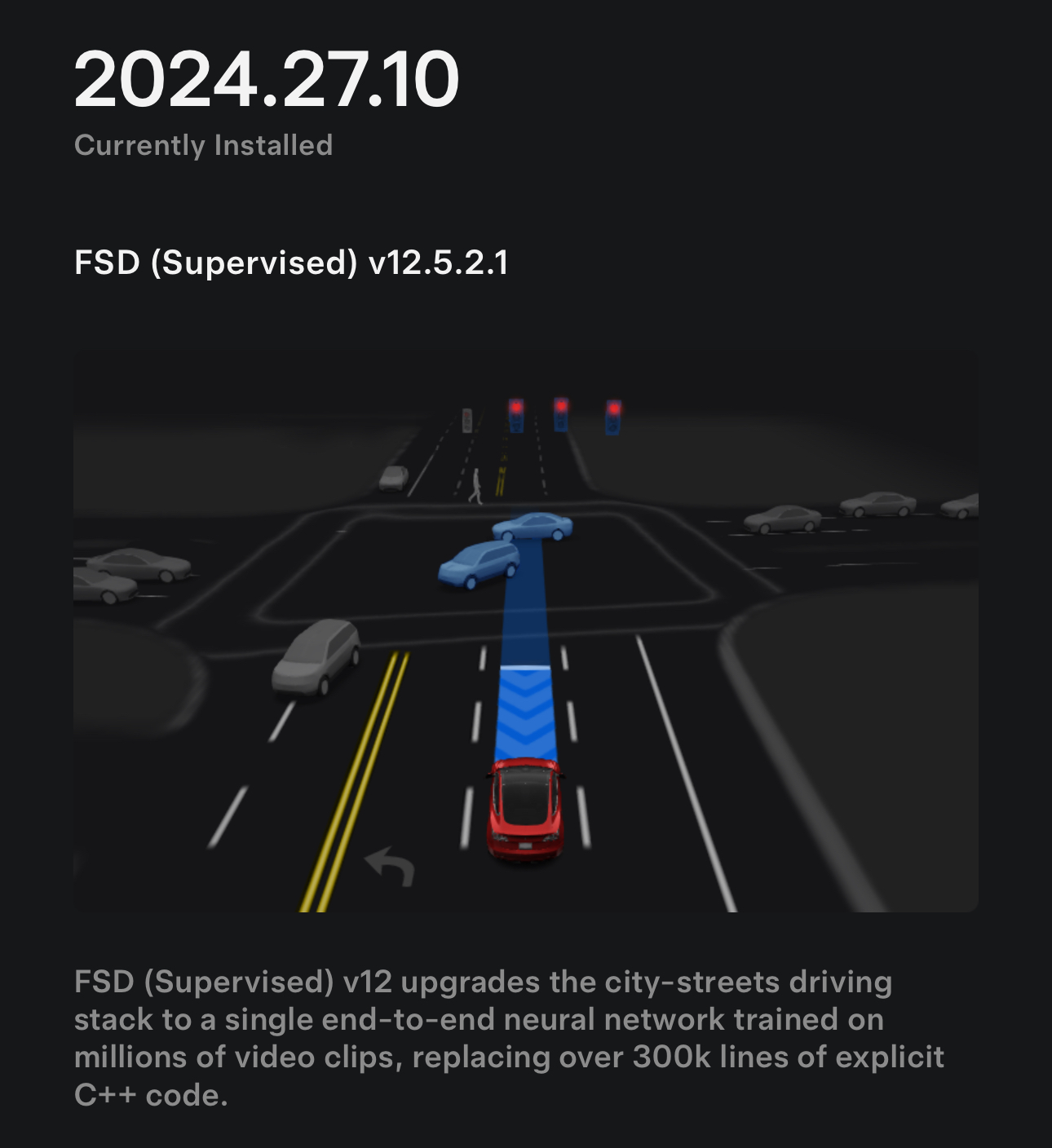I finally got a chance to test Tesla Full Self-Driving (supervised) v12.5 myself, and my first impression is that the system drives naturally, but is still dangerous.
Vigilance is very important.
Yesterday, I finally received a software update on my Tesla Model 3 that reads 'v12.5' (12.5.2.1, to be exact).
I've been waiting for it. You see, call me naive, but when Tesla CEO Elon Musk said last year that FSD updates on HW4 (new Tesla cars) would be about 6 months behind HW3 (old Tesla cars), I believed him :
It made sense. He has promised unsupervised self-driving in millions of HW3 vehicles for years. It makes sense that Tesla is focusing on fulfilling the promise of these older cars with less computing power before starting to use the higher computing power in the new HW4 cars.
However, that did not happen.
Earlier this year, Musk promised a big boost to the FSD ride every two weeks:
But I got FSD v12.3.6 on HW3 Tesla Model 3 at that time and I didn't get another FSD update for 6 months.
Instead, Musk admitted that Tesla now needs to upgrade its FSD code to work on older HW3 cars, and HW4 cars are getting more updates soon – indicating that Tesla reaching hardware limitations in older vehicles despite promises made.
While this situation has greatly dampened my hopes that Tesla will ever deliver on its promise of achieving self-driving in the millions of cars sold since 2016, I'm still happy to see this in the release notes for my car after a review this week:

Yesterday, I had to drive from Shawinigan to Trois-Rivières (25 km) and back. It was a great opportunity to test the system on dual carriageways and highways.
My first impression is that there is a significant improvement in driving comfort. It drives naturally; the auto speed mode feature helps a lot. It drives at a reasonable speed on the road rather than sticking to the speed limit or putting out what you say.
The new driver monitoring system, which is based on vision rather than sending warnings asking you to pull the wheels while holding them, helps to make the system feel more natural.
Now, if you don't look ahead at the road for a few seconds, you get a warning on the road attention screen, which goes off when you return your attention to it or give input to the steering wheel.
These were the main changes. I didn't see a significant improvement in performance, but the system is at least a lot more fun to use now. It makes using Tesla FSD less like a chore and more like a feature, which is a welcome change after more than two years of “FSD Beta” and now “Guarded FSD”.
I had to remove the system as I was about to reach my destination because the car was insisting on the right lane when I needed to be on the left to stop. This was a minor annoyance, but a breakup nonetheless.
On the way back, the car slowed down at the speed I had set on the highway for no reason. It's a common problem with the Tesla FSD that I had in almost every iteration of the system. it can be dangerous on highways, but this time, it only went down about 5-8 km/h and returned to the set speed in a few seconds without pulling out.
Soon after, however, I had a more serious problem that resulted in a significant breakup.
I should have turned left here:
A car was coming from the left, but it was too far and not coming fast. I would have made the turn without a doubt, but I wasn't sure if FSD, which is usually on the cautious side in those turns, would or would wait for the car to pass.
He made up his mind to go, but seemed to change his mind about a third of the way to the turn as it stood, or at least went very low into the turn; It's hard to say because I had to react quickly.
The front of the car was on the road, so I had to take over and finish the turn quickly to make sure the oncoming car didn't hit me.
Until then, I was very impressed with FSD v12.5. It's a good reminder that as technology improves and gets better, especially in nature like this update, it's important to stay extra vigilant. The smoothness of this update can cause overconfidence, but it is still prone to errors, as I was quickly reminded.
Electrek's Take
While I'm impressed and think it's an important step as FSD is now starting to feel like a real feature rather than just homework for Tesla customers to train on the system Tesla sold us years ago, I still have a hard time seeing the path from this to unsupervised self-driving, especially in HW3 vehicles.
Obviously, this was my first drive, and I need to spend more time with the system for a full review, but I had two breakdowns, including a serious one, at about 50 miles. We are still far from unsupervised.
My biggest fear is that as the system feels better, like this review, more people will start to get comfortable with it, which can lead to more accidents. I hope that Tesla's new driver monitoring system will combat that potential negligence.
WHAT DO YOU THINK? Let us know in the comment section below.
FTC: We use auto affiliate links to earn income. More.